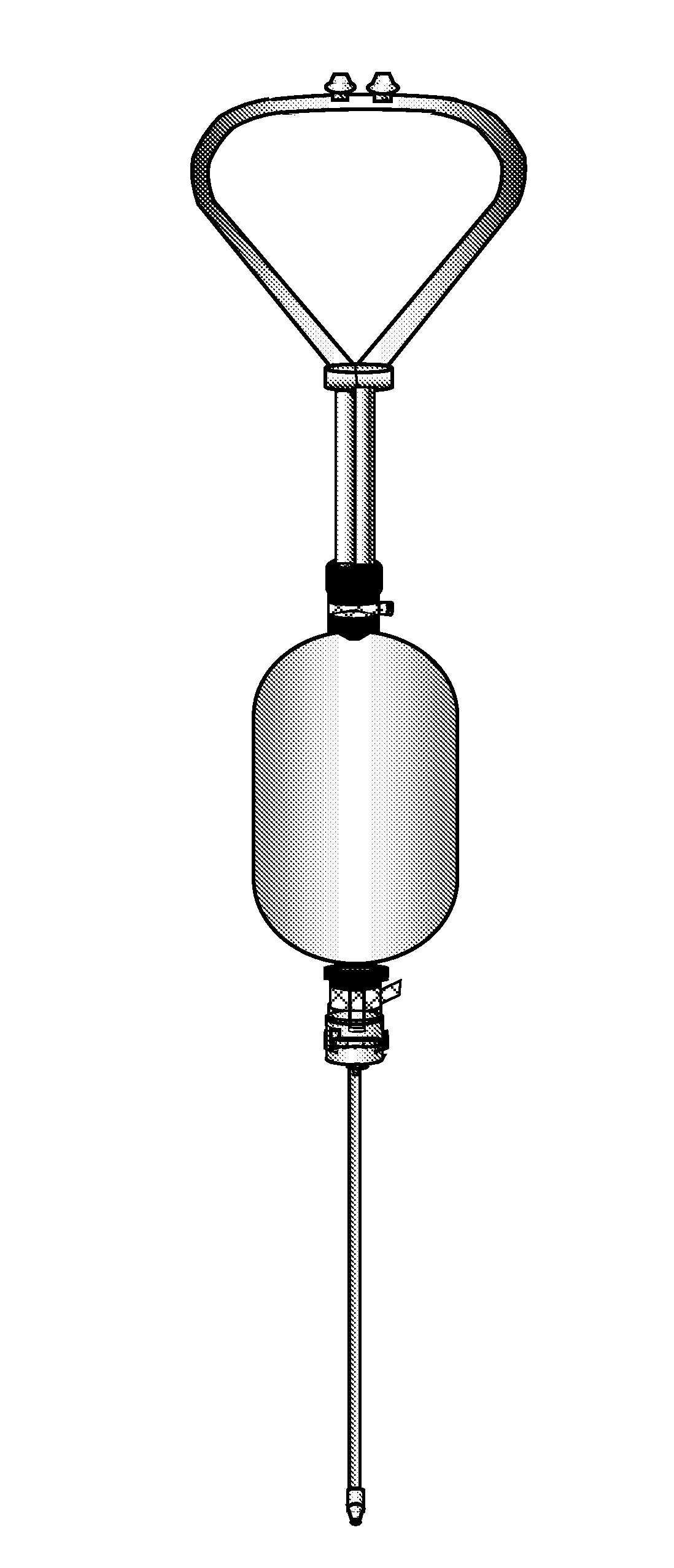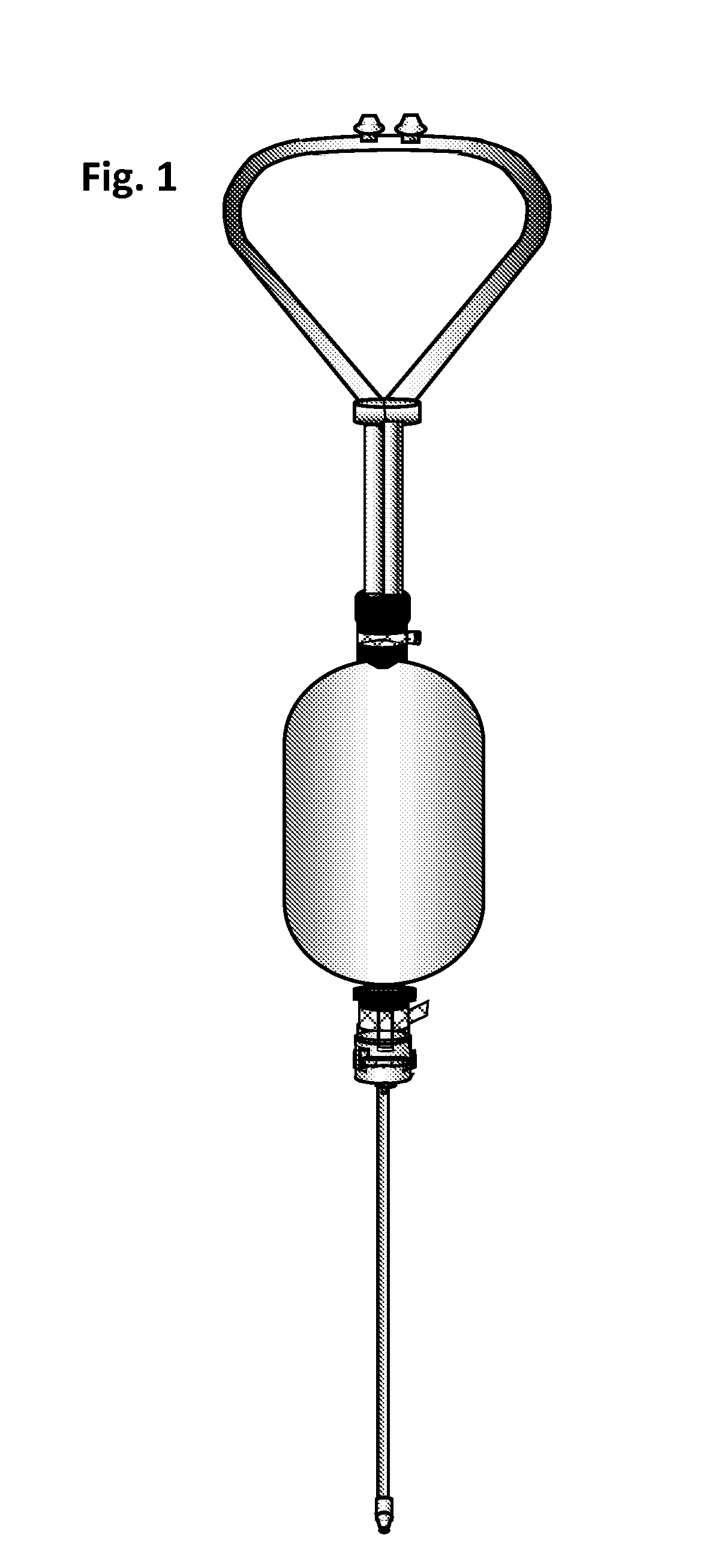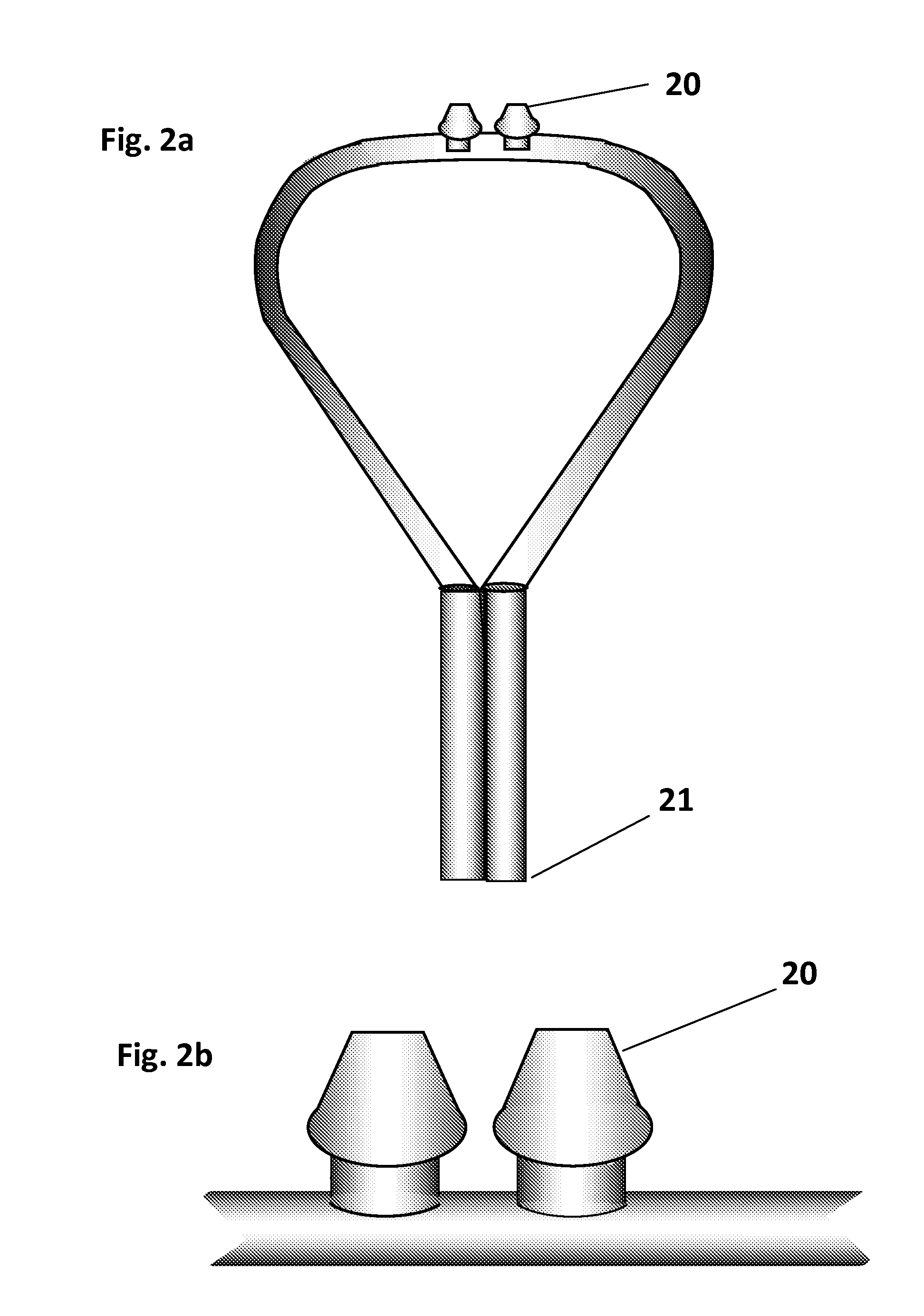Adjustable non-rebreathing nasal cannula
- Summary
- Abstract
- Description
- Claims
- Application Information
AI Technical Summary
Benefits of technology
Problems solved by technology
Method used
Image
Examples
first embodiment
[0045]The general purpose of this current embodiment is to provide to an efficient, precise amount of oxygen, up to one-hundred percent, while conserving oxygen during a user's exhalation. A complete assembly of this embodiment can be viewed in FIG. 1. This embodiment is designed to attach to standard oxygen flow systems. It can adjust the percentage of oxygen independent of the flow of oxygen via an air-entrainment system, shown in an exploded view, in FIG. 12. If there is no air entrainment by the system, then one-hundred percent oxygen will be delivered. The system has the ability to store oxygen during a user's exhalation with a reservoir bag, shown in FIG. 7, which is inline. The flow of oxygen need only be set high enough to prevent full bag deflation at the user's end of inspiration, decreasing the overall oxygen usage. The nasal prongs 20 (FIG. 2a) on the nasal cannula also aid in the efficiency of the system by preventing air entrainment into the user's nares during inspira...
PUM
 Login to View More
Login to View More Abstract
Description
Claims
Application Information
 Login to View More
Login to View More - R&D
- Intellectual Property
- Life Sciences
- Materials
- Tech Scout
- Unparalleled Data Quality
- Higher Quality Content
- 60% Fewer Hallucinations
Browse by: Latest US Patents, China's latest patents, Technical Efficacy Thesaurus, Application Domain, Technology Topic, Popular Technical Reports.
© 2025 PatSnap. All rights reserved.Legal|Privacy policy|Modern Slavery Act Transparency Statement|Sitemap|About US| Contact US: help@patsnap.com



